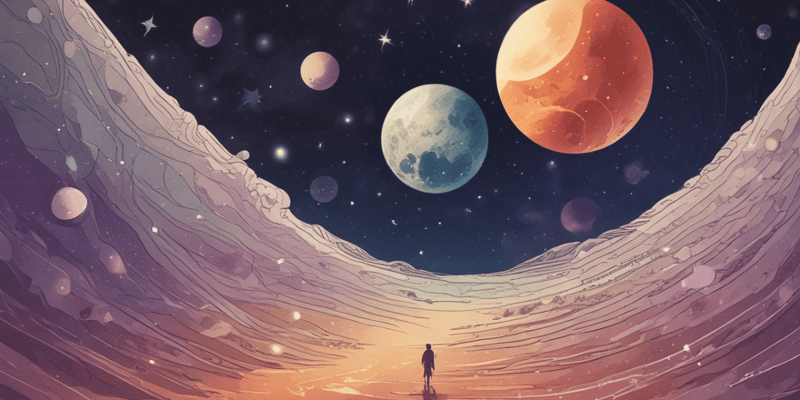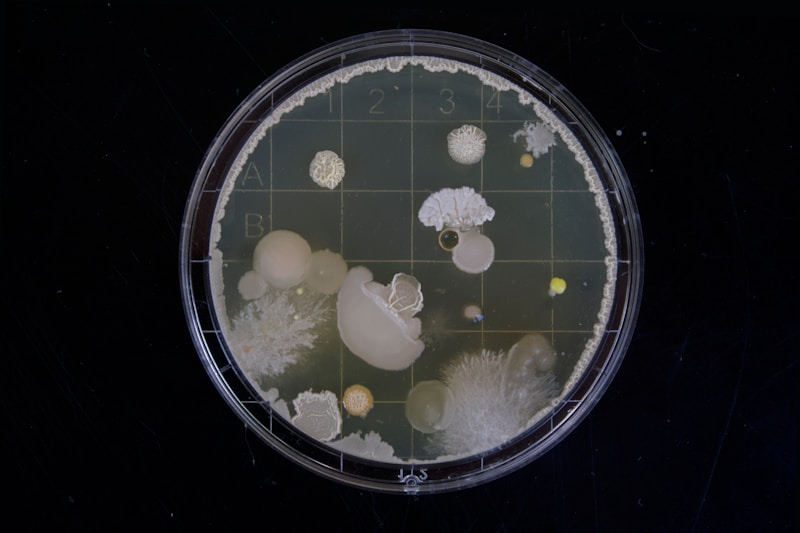24 Questions
Which planet in our solar system is the closest to the Earth?
Mercury
Which heavenly body rotates around the Earth?
Moon
Which planet in the solar system can sustain life?
Mars
What is the Sun's relation to the Earth?
Parent star
Which of the following planets does not have rings?
Jupiter
Which planet is known for its red color and dust storms?
Mars
Which planet is the largest in our solar system?
Jupiter
Which planet is famous for its beautiful rings made of ice particles?
Saturn
Which planet is often referred to as the 'evening star' or 'morning star' because of its brightness in the sky?
Mercury
Which planet is known for its blue color and extreme weather conditions, with winds reaching speeds of up to 1,100 miles per hour?
Neptune
What is the term for burning rocks that enter Earth's atmosphere?
Meteoroids
Which region in our solar system is known for containing small pieces of rocks and metal orbiting around the sun?
Asteroid Belt
What is a common name for the pieces of rocks and dust that break from a comet's nucleus?
Meteors
In which location do meteoroids burn when they enter Earth's atmosphere?
Atmosphere
What is another term for the small pieces of rocks and metal that orbit around the sun?
Asteroids
Which heavenly body is specifically mentioned to be known as 'planetoids' in the text?
Saturn
What term is used to describe the rocks that are burning when they enter Earth's atmosphere?
Meteors
Which planet is known as Earth's twin planet?
Saturn
How many small moons does Uranus have?
9
What is the largest volcano on Mars called?
Mount Olympus
Which planet is surrounded by 13 faint rings?
Uranus
How many days does it take for Earth to complete one rotation on its own axis?
36 hours
Which planet has an atmosphere composed mostly of methane gas?
Saturn
How many large moons does Jupiter have?
3
Study Notes
The Solar System
- The Sun is the star nearest to the Earth and the largest and brightest object in the solar system, making up 99.86% of the total mass.
- The Earth is the third planet from the Sun where life can be found, with 70% of its surface covered with water, taking 24 hours to complete its rotation on its own axis, and 365 days to complete its revolution around the Sun.
Planets
- Mercury is the closest planet to the Sun, one of the hottest planets, and also the coldest among the inner planets, taking about 88 days to complete one orbit around the Sun with no moon.
- Venus is the hottest planet in the solar system, with thick clouds made mostly of carbon dioxide, and has one large moon.
- Mars is known as the red planet, has two small moons (Phobos and Deimos), and has a thin atmosphere composed mostly of carbon dioxide.
- Jupiter is the largest planet in the solar system, has a very small faint dust rings around, and has 95 known moons, including the four large moons (Io, Europa, Ganymede, and Callisto).
- Saturn is the second largest planet in the solar system, with rings consisting of particles of ice and rocks, varying in size, and has 146 moons in its orbit.
- Uranus is the third largest planet in the solar system, surrounded by 13 faint rings and 28 small moons, with an atmosphere composed of methane gas.
- Neptune is the fourth largest planet in the solar system, with a dark-colored storm called the Great Dark Spot, and has 16 moons.
Other Members of the Solar System
- The Moon is Earth's natural satellite, goes through different phases as it orbits the Earth, and has a gravitational pull on Earth causing tides in the oceans.
- Comets are made up of dust and rocks particles with frozen water, methane, and ammonia, and an example is Halley's comet, which crosses the solar system every 76 years.
- Meteoroids are pieces of rocks and dust that break from comet's nucleus, and when they enter the Earth's atmosphere, they are burned, becoming meteors.
- Asteroids, also known as planetoids, are small pieces of rocks and metal that orbit around the Sun between Mars and Jupiter, and are found in the Asteroid Belt.
Get ready for a fun guessing game in your science class! Read statements about different celestial bodies and try to guess their identities. Test your knowledge of astronomy with this interactive and engaging activity.
Make Your Own Quizzes and Flashcards
Convert your notes into interactive study material.
Get started for free


